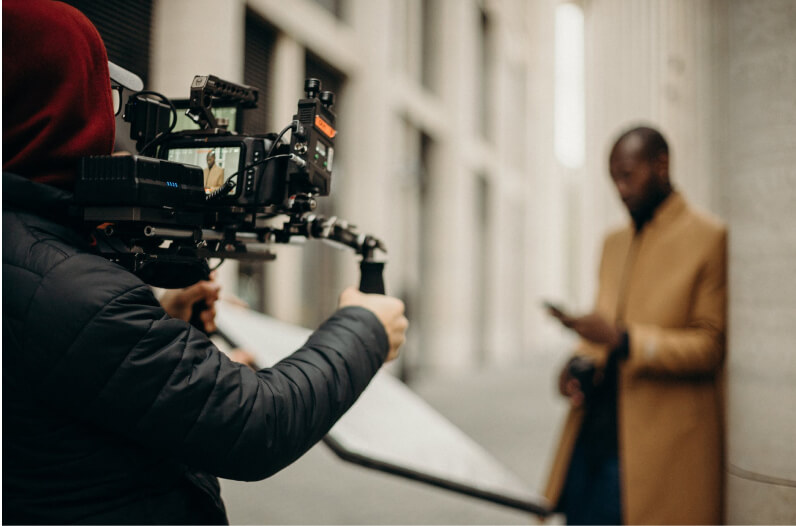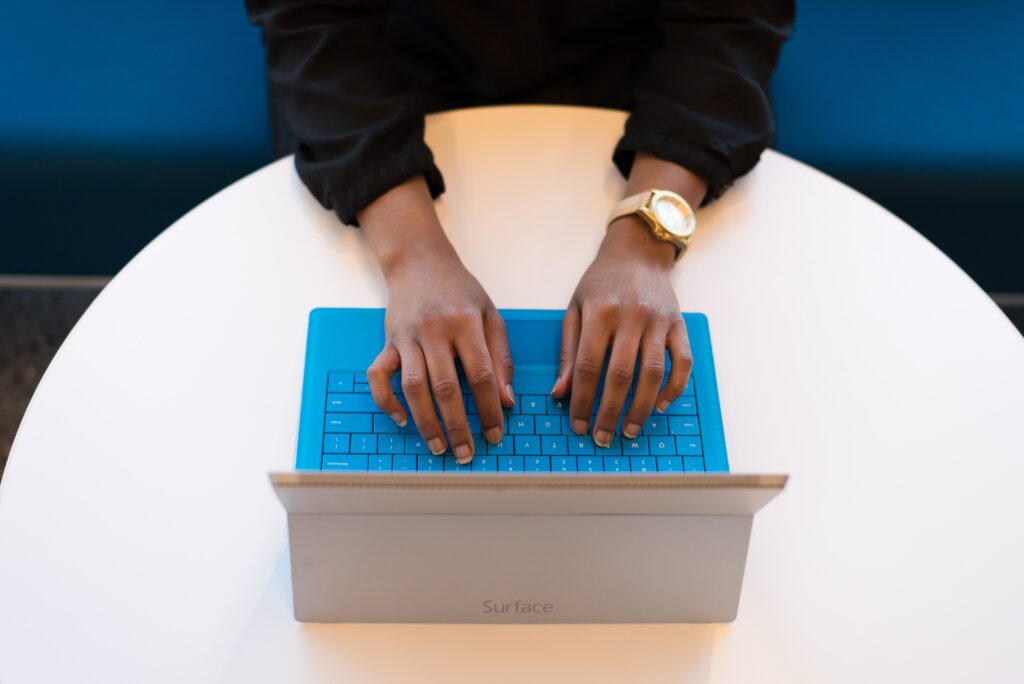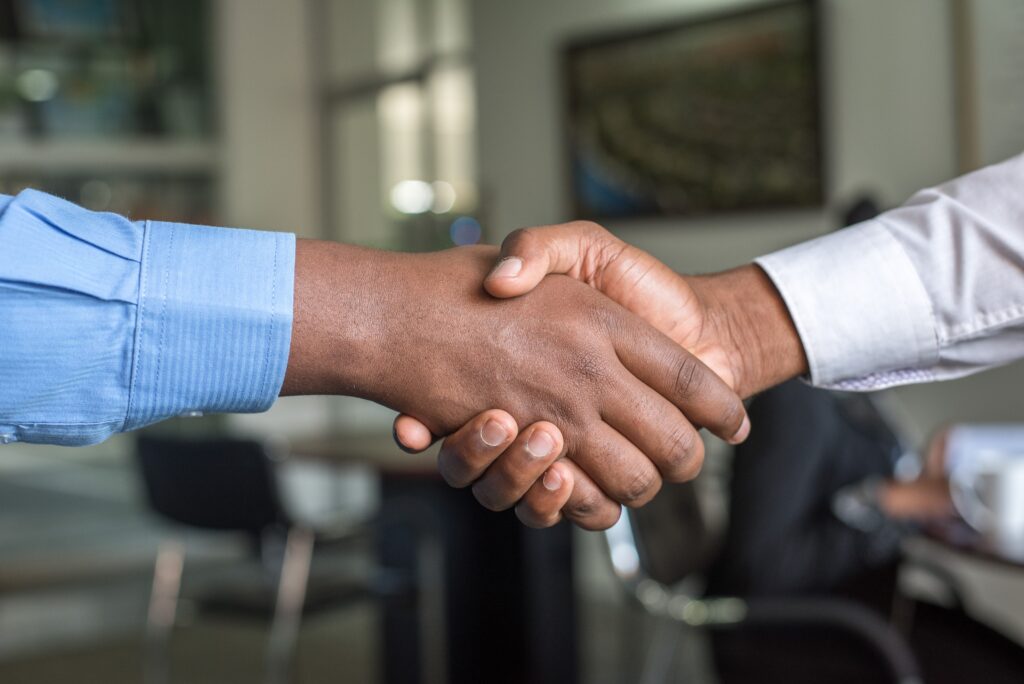Coverage of elections and democracy is essential to the maintenance of a free and open democratic society. Yet, journalists reporting on elections and democratic processes in the United States increasingly confront a range of legal, digital, and physical threats that can impact their mental health, physical safety, and reputation. The safety of journalists must be seen as an essential prerequisite for a free and diverse press that can connect with the communities it serves.
The threats journalists face in our polarized society are complex and interrelated. Journalists face a surge in online abuse that often reverberates into their psychological and physical worlds. They face disinformation campaigns which threaten their reputation as well as the integrity of their reporting. Verbal attacks of the media have become routine for many politicians at their rallies, sometimes inciting crowds to violence against reporters. While reporting on the ground at local government meetings and polling stations, journalists can find themselves on the front lines, exposing them to physical risks from hostile crowds. All of these threats are taking place within the context of economic precarity across the media industry amidst waves of layoffs that often drive journalists to take on greater risks.
We have curated resources and organizations to help journalists navigate the myriad risks they may face.
Guides, Courses, Tipsheets, and Checklists
The Committee to Protect Journalists (CPJ) – Online and Offline
Covering Elections: Journalist Safety Kit
When you have a question about journalist safety, CPJ, whose central mission is to protect journalists around the world, is always a great place to start. They have curated a package of resources for safe election coverage. This resource kit begins with a risk assessment template, which is one the most flexible tools that enables journalists to proactively identify and mitigate potential threats to their safety and the integrity of their reporting. By conducting thorough risk assessments, journalists can make informed decisions about their coverage strategies, implement security measures, and establish contingency plans, ultimately ensuring they can carry out their crucial role in safeguarding democracy while minimizing personal and professional vulnerabilities.
The kit includes three sections on physical safety for situations were journalists face increased risk of physical violence:
- covering rallies and protests
- working in hostile communities, including ones hostile to media
- working in areas affected by crime
It has a section on psychological safety, which is a great starting point for managing trauma, trauma-related stress, and PTSD.
If you find through your risk assessment that you need personal protective equipment (PPE) to cover a rally or protest, CPJ also has a guide on PPE with pictures and explanations of what items are best for which scenarios.
The kit also has four guides related to digital security around election coverage:
- preparing your devices for political rallies
- securing data, materials, and devices
- preparing for a communications blackout
- defending from online abuse and misinformation
Outside of the kit, CPJ has many other safety resources for journalists, including a guide of legal rights in the U.S. that is relevant for all reporters covering democracy.
Reporters Committee for Freedom of the Press (RCFP)
Election Legal Guide
RCFP is a U.S. organization that offers legal support to journalists, so it’s the first place to look for resources on legal aid, knowing your rights as a reporter, and the laws of covering elections. This guide put together for 2022 for covering that year’s midterm elections provides legal information on exit polling, newsgathering around polling stations, ballot selfies, and access to ballots and election records. It provides more details on laws and regulations in Arizona, Florida, Georgia, Michigan, Minnesota, Nevada, New Hampshire, North Carolina, Ohio, Pennsylvania, and Wisconsin.
Protest Tip Sheet
RCFP also has an excellent tip sheet with guidance for reporters on ways to protect themselves from arrest and detention before protests and at protests. They also have a lengthier guide for reporters to know their rights when covering protests and civil unrest.
ACOS (A Culture of Safety) Alliance
Assignment Safety Checklist
While a couple of items on this checklist may not apply to journalists reporting in their country of residence, it’s a great detailed list of items that staff and freelance journalists as well as editors should address before an assignment with an elevated risk of harm.
Model Freelance Contracts
While many people may not think of contracts when they’re thinking of safety measures for journalists, the terms negotiated in contracts have a direct impact on our safety. They can determine what insurance coverage and protective equipment we have, who in the newsroom has our back, and even what risks we’re willing to take. ACOS has put together sample contracts that are ready to use as they are by freelancers with an eye toward safety and maximal protection.
Totem Project
Risk Analysis Course
This self-paced online course is designed to help journalists identify the risks they face in their work and how their identity can impact their security.
Totem also has other courses to help journalists with their safety, including three free online courses on mental health:
- Taking Care of Your Mental Health
- Psychological Preparation Before and After an Assignment
- Psychological First Aid
Headlines Network
Burnout in Journalism
Founded and run by journalists, Headlines Network works with newsrooms to promote the mental health and wellbeing of journalists. This guide is designed to help journalists recognize burnout and help reduce its impacts.
PEN America
Online Harassment Field Manual
PEN America’s Online Harassment Field Manual is one of the first and most comprehensive guides on how to navigate the risks online violence poses to journalists and writers. The field manual includes guides for people experiencing abuse as well as for their allies and employers. It offers tips on how to prepare for abuse and reduce its likelihood, pluswhat to do when you’re targeted.
Coalition Against Online Violence
Online Violence Response Hub
The response hub is an directory that connects journalists experiencing a broad range of online attacks (or concerned about being targeted online) with resources such aslegal support, psychosocial support, and emergency assistance.
International News Safety Institute
What to Put in Your Medical Pack
A medical kit and the training on how to use it are essential safety tools for journalists at risk of experiencing a traumatic injury be it from gun violence or a car accident. This advisory gives an overview of when you might need a medical kit and what to pack in it.
The New York Times
How to Dox Yourself on the Internet by Neena Kapur and Kristen Kozinski
This guide walks people through how to find personal information about themselves online (for example, home addresses and phone numbers) and remove it before a bad actor can use this information to target them. They also have a checklist for security and privacy settings on social media platforms to optimize for safety.
Electronic Frontier Foundation (EFF)
Surveillance Self-Defense – Attending a Protest
EFF advocates for digital freedoms and protections from surveillance. In this guide, they explain how to protect your devices before, during, and after attending a protest to keep yourself and your information safe. This guidance can also be used when covering a rally or other event where your devices might be inspected by event security or law enforcement officials.
Right To Be
Responding to Online Harassment
This guide provides five actionable steps to take when experiencing online abuse. It gives those facing abuse a menu of options so they can determine actions best suited to their circumstances.
Assistance
These organizations offer a range of support to journalists — from legal aid to emergency fundinging to tip sheets — that reduce the risk of harm and help respond to threats.
The Committee to Protect Journalists (CPJ): CPJ is an independent international nonprofit organization that promotes press freedom and defends the rights of journalists to do their work safely worldwide. They provide safety resources, advocacy, and emergency assistance to journalists facing threats and attacks whether the attacks be on- or offline.
ACOS Alliance: ACOS (A Culture of Safety) Alliance is a coalition of more than 150 newsrooms, press freedom NGO’s, and journalists around the world working together to embed a culture of safety in journalism.
International Women’s Media Foundation (IWMF): The IWMF focuses on empowering and protecting female and non-binary journalists globally. They offer safety training, fellowships, grants and emergency funding for journalists.
PEN America: PEN America is dedicated to protecting and promoting freedom of expression. They advocate for the rights of journalists, writers, and artists and offer resources, including training and support on online safety to protect free speech.
Freedom of the Press Foundation: This foundation works to defend and support journalism in the digital age. They provide tools, resources, and training for independent journalists and news organizations looking to enhance their digital security and protect their online presence and assets.
Coalition Against Online Violence: The Coalition brings together dozens of NGOs and other international organizations committed to supporting journalists who face online abuse and harassment. Through the Online Violence Response Hub, it provides guides and assistance to people experiencing violence online.
Consumer Reports’ Security Planner: Consumer Reports offers a slew of resources for those concerned about their privacy. Of particular use to journalists facing online abuse is this list of places to get assistance to respond to online harassment.
Reporters Without Borders (RSF): RSF is an international organization that advocates for press freedom and provides support to journalists in danger. They offer safety training, legal assistance, and advocacy campaigns to protect journalists.
The Rory Peck Trust: This organization supports freelance journalists by providing safety resources, training, and assistance in crisis situations.
Reporters Committee for Freedom of the Press: This U.S.-based organization provides legal resources and support to journalists facing legal challenges or threats to their safety. If you need emergency assistance, contact their legal hotline.
The Dart Center for Journalism and Trauma: Focused on the intersection of journalism and trauma, the Dart Center provides resources, training, and support for journalists dealing with traumatic experiences while reporting.
Troll Busters: Troll Busters has been providing safety training, security advice, and direct support to journalists facing threats on and offline for more than a decade. Their site also has many resources on digital hygiene, mental wellbeing, and personal safety.
Media Defence: Based in the U.K., this organization offers emergency aid and legal representation around the world to journalists facing legal harassment.
Lawyers for Reporters: This organization offers pro bono legal services for local newsrooms around the U.S.
AccessNow: This international NGO is focused on promoting digital rights and freedoms worldwide. Its helpline offers support 24/7 to media organizations, journalists, activists, and human rights defenders experiencing online attacks.
Free Press Unlimited: This press freedom organization advocates for the rights of journlasits around the world and offers emergency support to journalists and newsrooms who are targeted because of their work. Their support includes medical assistance, short term relocation costs, legal defense support, psychosocial support, and security advice.
The International Federation of Journalists (IFJ): IFJ is a global organization dedicated to promoting journalists’ rights and safety. They offer safety training, advocacy, and support for journalists at risk.
Additional Resources
Freedom of the Press Foundation
Mobile security tips: Nine steps to prepare your phone before an action by Olivia Martin
Infographic
Freedom of the Press Foundation
What to do if your phone is seized by the police
Article
International Journalists’ Network (IJnet)
12 Tips for Minding the Security of Your Mobile Device When Covering Elections by Jorge Luis Sierra
Tipsheet
International Center for Journalists
Mental Health Tips and Resources for Journalists by Katya Podkovyroff Lewis
Article
#NotOk – Canadian Broadcasting Corporation (CBC)
Tip Sheet for Individuals [to Manage Online Abuse]
Tipsheet




